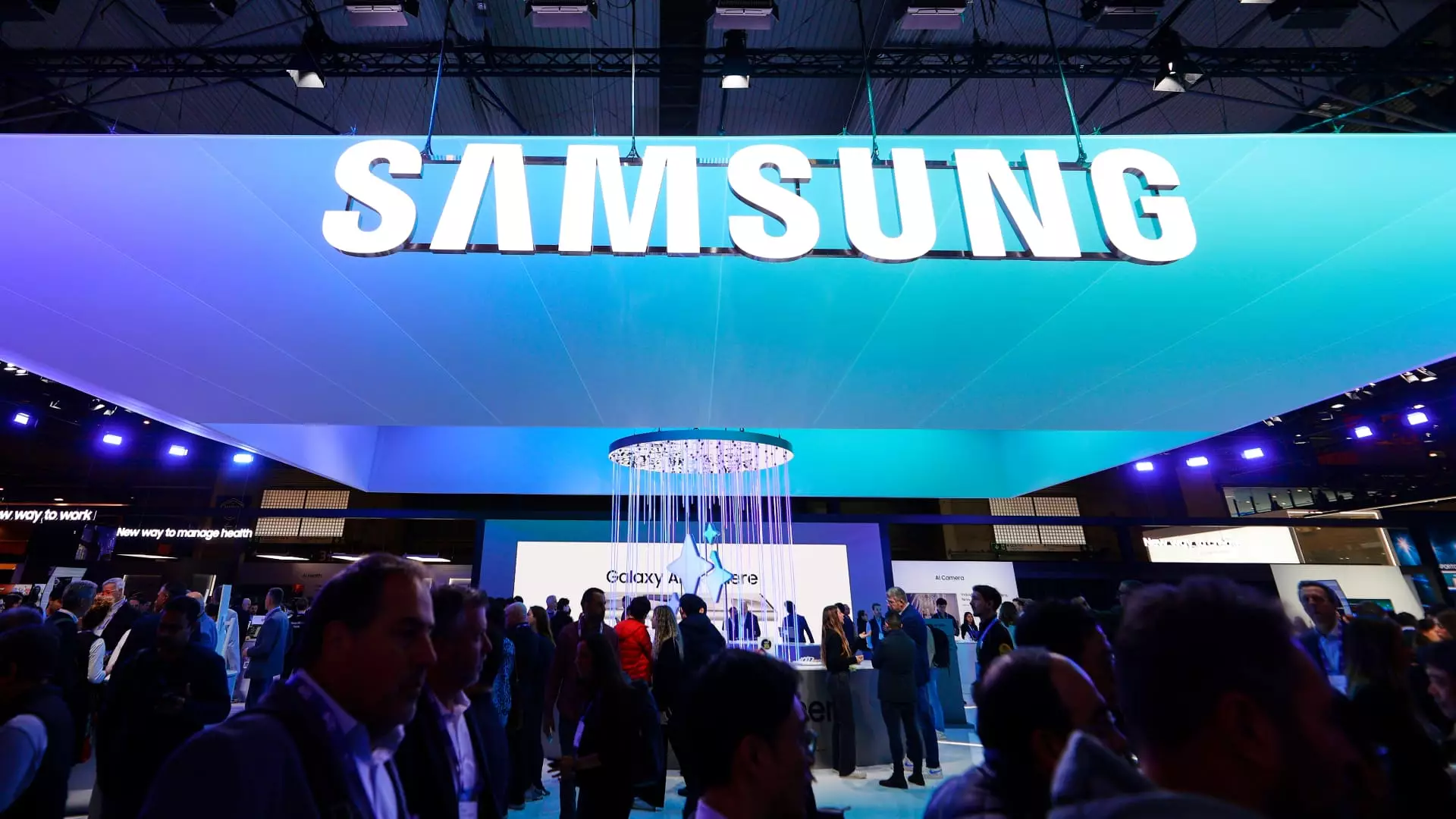South Korea’s technological powerhouse, Samsung Electronics, has recently signaled a grim outlook for its third-quarter profits, revealing potential earnings that fall short of industry expectations. The preliminary guidance suggests an operating profit of approximately 9.10 trillion won, a staggering increase of 274% from the previous year’s 2.43 trillion won. Yet, this figure pales in comparison to analyst predictions which pegs the expected profit at 11.456 trillion won, roughly $7.7 billion. Such discrepancies highlight significant challenges the company is currently navigating in an ever-evolving tech landscape.
Alongside profit forecasts, Samsung anticipates a total revenue of about 81.96 trillion won ($61 billion). Despite these impressive year-over-year figures, they resonate with the consequences of market pressures, particularly within the semiconductor sector. The company’s dominance as the leading memory chip manufacturer does little to cushion the blow from immediate economic dynamics, such as inventory adjustments requested by mobile clients and the intense competition with Chinese memory manufacturers. Samsung’s acknowledgment of these factors in their statements reveals an organization grappling with the dual challenges of supply chain disruptions and fluctuating demands.
The dynamics in the memory chip market, especially with the recent delays concerning high-bandwidth memory (HBM3E) shipments, bring to light broader industry challenges that extend beyond Samsung. Analysts emphasize the importance of agility in supply management, particularly as traditional memory products (DRAM) face diminishing demand. Daniel Yoo from Yuanta Securities Korea speaks candidly about Samsung’s diminished market share, suggesting that the company’s approach to capturing the legacy chip market is not as aggressive as it once was. The warning from Macquarie Equity Research accentuates the potential vulnerabilities Samsung may face, especially as smaller rivals become increasingly competitive.
In light of these challenges, Samsung’s leadership has made troubling adjustments, including a directive to reduce a portion of its workforce across global subsidiaries by 30%. Such measures reflect a strategy to streamline operations amidst declining demand. The company’s stock performance has also mirrored these challenges, exhibiting a 22% decrease year-to-date, a concerning trend for shareholders. Following the recently released earnings guidance, Samsung’s shares dipped by 0.98%, signifying a loss of investor confidence and highlighting the urgent need for a strategic reevaluation.
As Samsung navigates these tumultuous waters, it faces a critical juncture that will determine its positioning within the tech hierarchy. The insights generated from profit projections, market dynamics, and corporate restructuring reveal the multifaceted nature of the challenges ahead. For Samsung to maintain its industry leadership, an urgent recalibration of its strategies in response to market demands will be essential. As the firm prepares to release detailed quarterly results later this month, the focus will undoubtedly shift to how effectively it can address these underlying issues and regain momentum in a competitive sector.

Leave a Reply